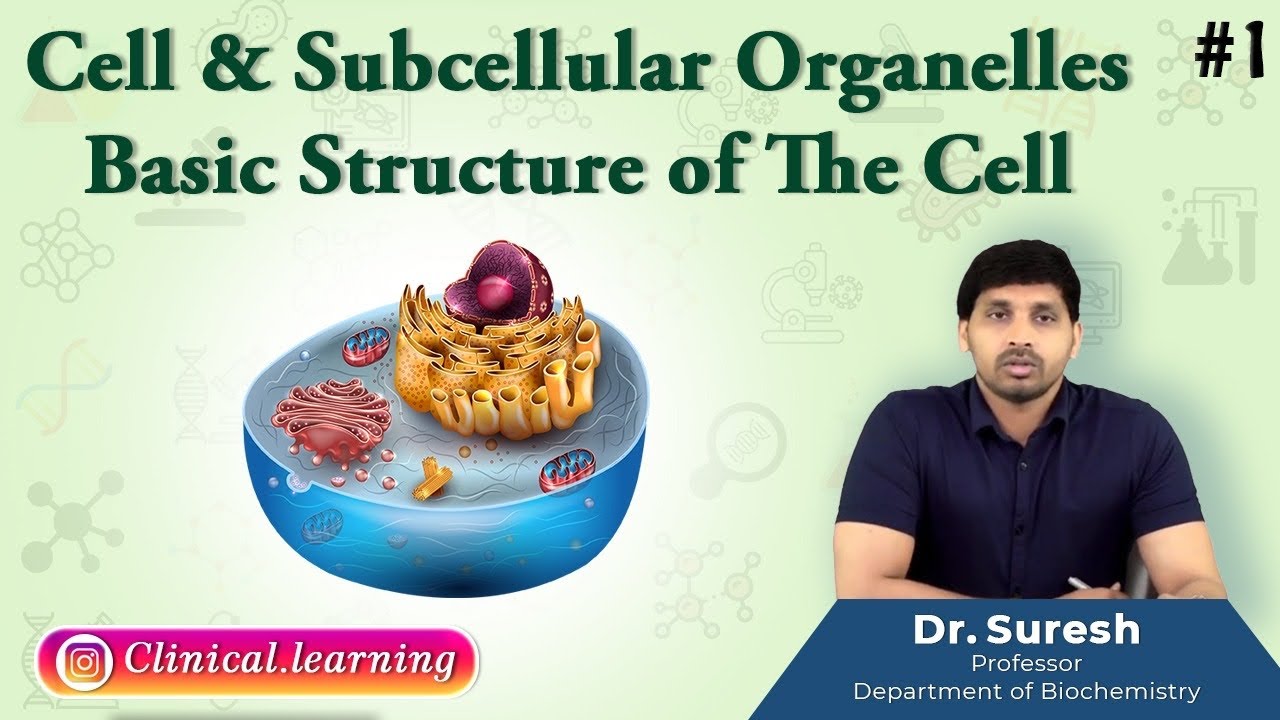Biologi Part 3; Struktur & Fungsi Sel
Summary
TLDRThis transcript discusses a biology lecture focusing on the structure and function of cells. It explains the cell theory, differentiating between prokaryotic and eukaryotic cells, and elaborates on cell components like the membrane, endoplasmic reticulum, ribosomes, and lysosomes. The lecture also touches on the role of cells in growth, reproduction, and overall organism development. Special attention is given to processes like protein synthesis, digestion of nutrients, and the importance of structural components like the cell wall in plants.
Takeaways
- 🧬 The lecture discusses the biology topic of cells, focusing on their structure and function.
- 🔬 Cells are the fundamental unit of life and are found in all living organisms, except viruses.
- 🧫 There are two types of cells: prokaryotic (simple cells like bacteria) and eukaryotic (complex cells like those in humans and plants).
- 🌿 Plant cells have a rigid cell wall, while animal cells have a flexible membrane.
- 🧪 The cell membrane is made up of lipids, which include hydrophobic and hydrophilic layers that control the passage of substances.
- 📦 Ribosomes attached to rough endoplasmic reticulum produce proteins, while the smooth endoplasmic reticulum synthesizes fats and carbohydrates.
- 🍽️ Lysosomes contain digestive enzymes that break down nutrients and help in cell maintenance.
- 🛡️ White blood cells and lysosomes play an essential role in breaking down toxins and defending the body.
- 🦴 Cells grow and divide, helping organisms develop from babies to adults and aiding tissue growth like bones and heart muscles.
- 🌱 In plants, the rigidity and growth are supported by the cellulose structure of the cell wall.
Q & A
What is the basic definition of a cell according to the script?
-A cell is defined as the basic unit of life and the building block of organisms. It is the smallest unit that can carry out all the functions of life.
Who was the scientist mentioned in the script that contributed to the cell theory in the early 19th century?
-The scientist mentioned is a physiologist who stated that cells divide to form new cells, and every cell originates from a pre-existing cell.
What distinguishes prokaryotic cells from eukaryotic cells?
-Prokaryotic cells lack a defined nucleus and membrane-bound organelles, whereas eukaryotic cells have a nucleus and organelles enclosed within membranes.
What is the function of the cell membrane as described in the script?
-The cell membrane acts as a barrier, controlling the entry and exit of substances into and out of the cell. It is composed of a lipid bilayer with polar and hydrophobic regions.
What are the two types of endoplasmic reticulum mentioned, and what are their functions?
-The two types of endoplasmic reticulum are smooth ER and rough ER. Smooth ER synthesizes lipids and carbohydrates, while rough ER, studded with ribosomes, synthesizes proteins.
What is the role of ribosomes in the cell?
-Ribosomes are responsible for protein synthesis. They assemble amino acids into proteins based on the instructions provided by mRNA.
How do lysosomes function in the cell?
-Lysosomes contain digestive enzymes that break down food particles, waste materials, and cellular debris. They can also destroy invading viruses and bacteria.
What is the function of centrioles in cell division?
-Centrioles help organize the assembly of microtubules during cell division, ensuring that the chromosomes are evenly divided between the two daughter cells.
How does the cell wall differ between plant cells and animal cells?
-Plant cells have a rigid cell wall made of cellulose, which provides structural support, while animal cells lack a cell wall and instead have a flexible cell membrane.
What role do white blood cells play in conjunction with lysosomes?
-White blood cells use lysosomes to digest and destroy pathogens, such as bacteria and viruses, helping to protect the body from infections.
What is the significance of the lipid bilayer in the cell membrane?
-The lipid bilayer forms a semi-permeable membrane that allows selective passage of substances, maintaining the cell's internal environment.
How do enzymes within lysosomes avoid damaging the cell itself?
-Enzymes within lysosomes are enclosed in a membrane, preventing them from interacting with and damaging other cellular components.
Outlines

Этот раздел доступен только подписчикам платных тарифов. Пожалуйста, перейдите на платный тариф для доступа.
Перейти на платный тарифMindmap

Этот раздел доступен только подписчикам платных тарифов. Пожалуйста, перейдите на платный тариф для доступа.
Перейти на платный тарифKeywords

Этот раздел доступен только подписчикам платных тарифов. Пожалуйста, перейдите на платный тариф для доступа.
Перейти на платный тарифHighlights

Этот раздел доступен только подписчикам платных тарифов. Пожалуйста, перейдите на платный тариф для доступа.
Перейти на платный тарифTranscripts

Этот раздел доступен только подписчикам платных тарифов. Пожалуйста, перейдите на платный тариф для доступа.
Перейти на платный тарифПосмотреть больше похожих видео

Introduction to Biology | Class 11 Biology Chapter 1 Nepal | Biology Class 11 in Nepal | Sj Classes

1. Cell & Subcellular Organelles - BASIC STRUCTURE OF THE CELL

生命科學(一) Ch7-2 A Tour of the Cell

Kuliah Biologi Sel dan Genetika: INTI SEL

Struktur Sel (Biologi Sel dan Molekuler)

मानव कोशिका | Human Cell | Biology | Khan GS Research Center
5.0 / 5 (0 votes)
